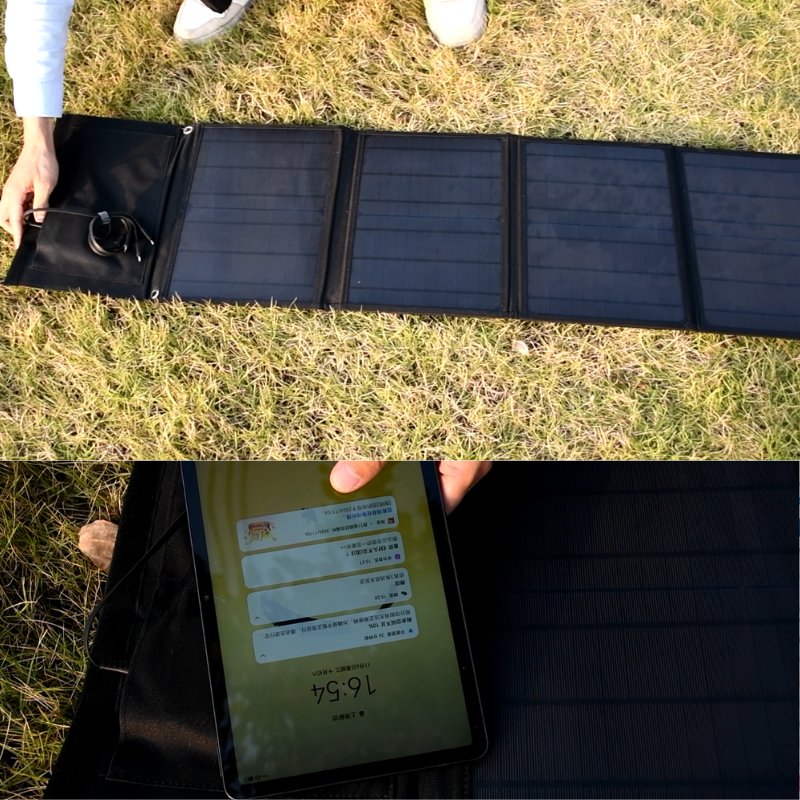When you’re out in the wild, staying connected and powered up can be a challenge. Whether you’re camping, hiking, or cycling, a solar charger can be your best friend—if you know how to use it effectively. In this blog, we’ll share practical tips to help you get the most out of your solar charger during outdoor adventures.



1. How to Use Your Solar Charger Efficiently
Solar chargers are a fantastic way to harness the sun’s energy, but their efficiency depends on how you use them. Here’s how to make the most of your device:
- Positioning is Key: Always place your solar charger in direct sunlight. Angle it towards the sun for maximum exposure.
- Avoid Shade: Even a small shadow can significantly reduce charging efficiency.
- Charge During Peak Sunlight: The best time to charge is between 10 AM and 4 PM when the sun is at its strongest.
- Use Low-Power Devices First: Solar chargers work best with low-energy devices like phones, GPS units, or headlamps. For larger devices, consider pairing your solar charger with a portable power station (more on that later).
2. How Weather and Light Conditions Affect Charging
The performance of your solar charger depends heavily on weather and light conditions. Here’s what you need to know:
- Sunny Days: Ideal for charging. Expect optimal performance with clear skies and direct sunlight.
- Cloudy Days: Charging will be slower, but most modern solar chargers can still generate power in overcast conditions.
- Rainy or Foggy Weather: Charging efficiency drops significantly. In such conditions, rely on a backup power source like a portable power station.
- Temperature: Extreme heat can reduce the efficiency of solar panels. Keep your charger cool and avoid leaving it in hot cars or direct sunlight for extended periods.
3. How to Maintain and Care for Your Solar Charger
Proper maintenance ensures your solar charger stays in top condition for years to come. Follow these tips:
- Keep It Clean: Dust, dirt, and debris can block sunlight. Wipe the solar panels with a soft, damp cloth regularly.
- Store Properly: When not in use, store your solar charger in a cool, dry place. Avoid folding or bending it unnecessarily to prevent damage.
- Check Connections: Inspect the cables and ports for wear and tear. Replace any damaged parts immediately.
- Avoid Water Damage: While many solar chargers are water-resistant, they’re not waterproof. Keep them dry and avoid submerging them in water.
4. Pairing Your Solar Charger with a Portable Power Station
For longer trips or when charging high-power devices, a portable power station can be a game-changer. Here’s how to use them together:
- Charge the Power Station First: Use your solar charger to fully charge your portable power station during the day. This stored energy can then be used to charge devices at night or during poor weather.
- Choose the Right Power Station: Look for one with a compatible input voltage and sufficient capacity to meet your needs.
- Optimize Energy Use: Use the power station for high-energy devices like laptops or cameras, and reserve the solar charger for smaller gadgets.
- Plan Ahead: Calculate your energy needs before your trip to ensure you have enough power for the duration of your adventure.
Final Thoughts
A solar charger is an essential tool for any outdoor enthusiast, but its effectiveness depends on how you use and care for it. By following these tips, you can ensure your devices stay charged, no matter where your adventures take you.
So, pack your solar charger, pair it with a portable power station, and embrace the freedom of sustainable energy on your next outdoor journey! 🌞🌿
What’s your experience with solar chargers? Share your tips and stories in the comments below!
Reference
1:60W solar charger available on HearGrow https://heargrow.com/product/heargrow-60-watt-portable-solar-panel-premium-18v-portable-solar-panel-for-generators-boats-power-stations/
2:The Checklist Every First Time RVer Needs http://The Checklist Every First Time RVer Needs


